Abstract
By placing parasite-free calves in paddocks grazed by infected animals for 18 day periods at various times during the previous season it was shown that eggs of Ostertagia ostertagi, Cooperia oncophora and Nematodirus helvetianus deposited on pastures from early July to October of one year were able to survive in the Maritime area of Canada over winter either as eggs and/or larvae and contribute to residual infections on these pastures the following spring. The greatest deposition and/or survival of those eggs that were shed on pasture occurred in August and September for Cooperia and in September and October for Ostertagia. Greatest deposition of Nematodirus occurred in July and August and relatively few Nematodirus eggs shed in late September or early October were infective early in the next season.
The number of generations of worms per year was low, ranging from one to two or perhaps three per year depending on the species. There was a delay in the maturation of many worm eggs.
Residual overwintering infections play a significant role in the establishment of initial infections each summer in susceptible stock. These animals recontaminate the pastures leading to the subsequent development of large numbers of infective larvae by late summer and autumn.
Full text
PDF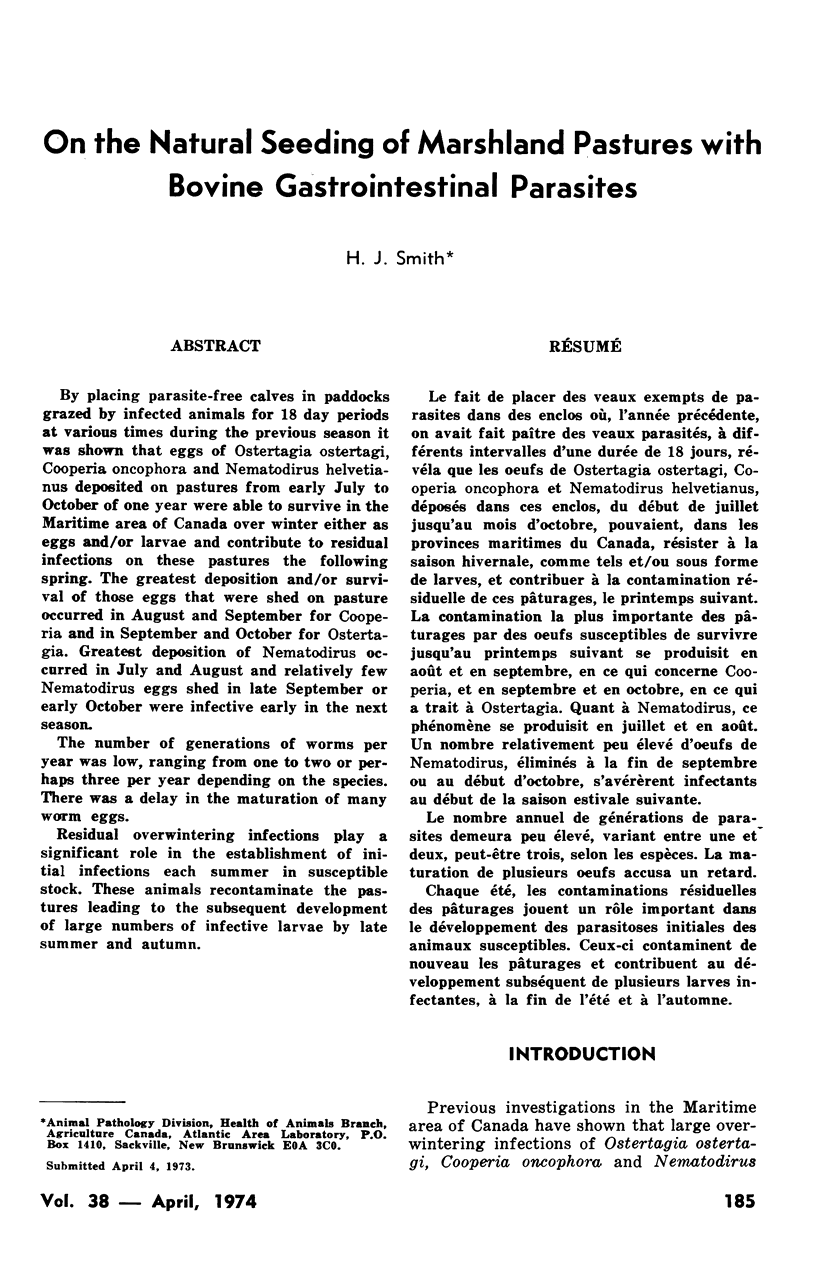
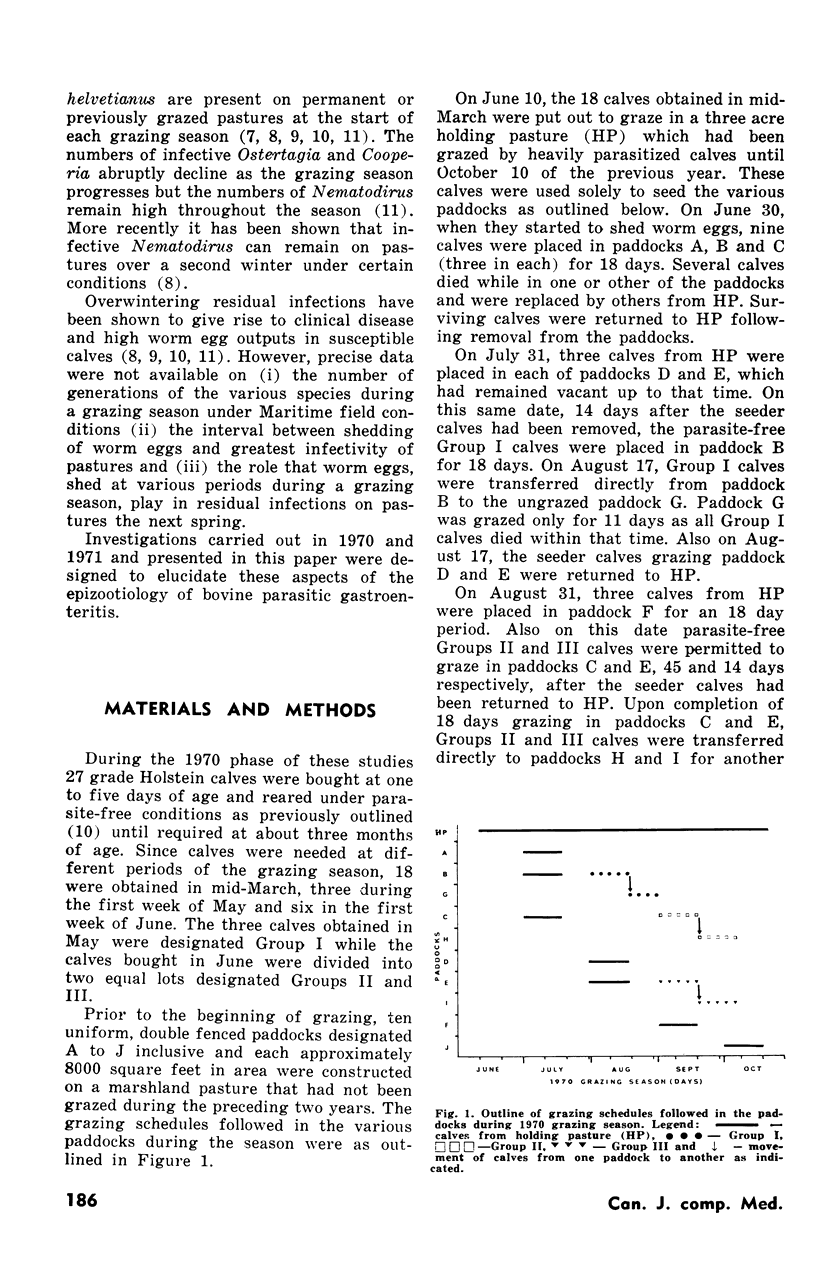
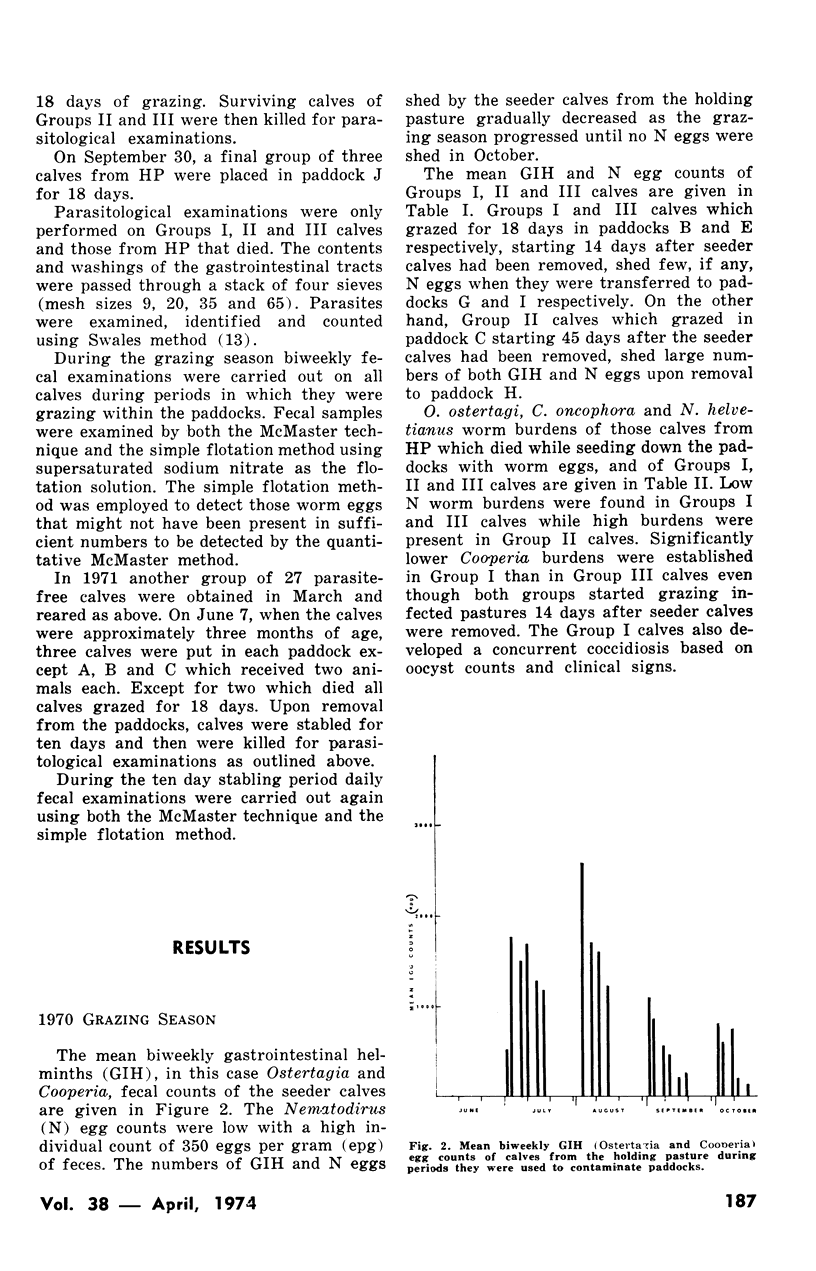
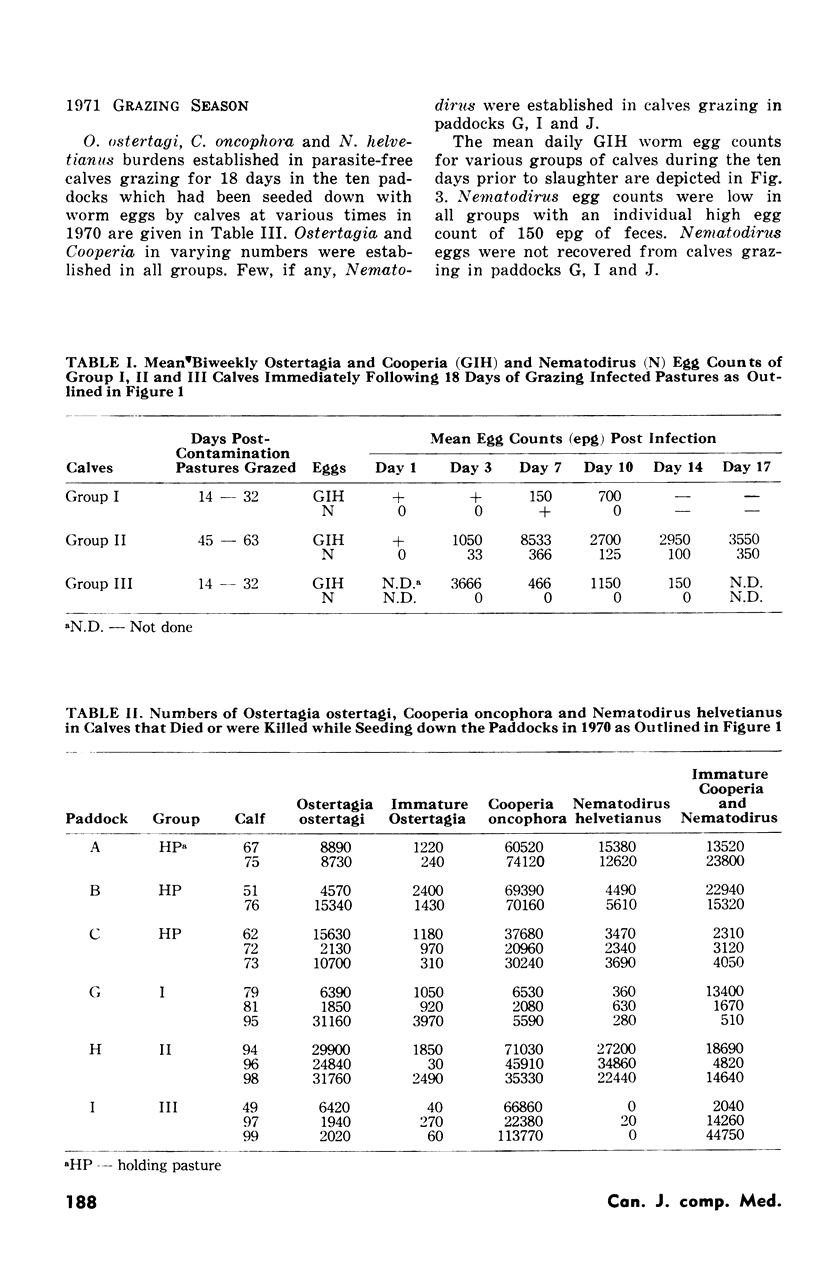
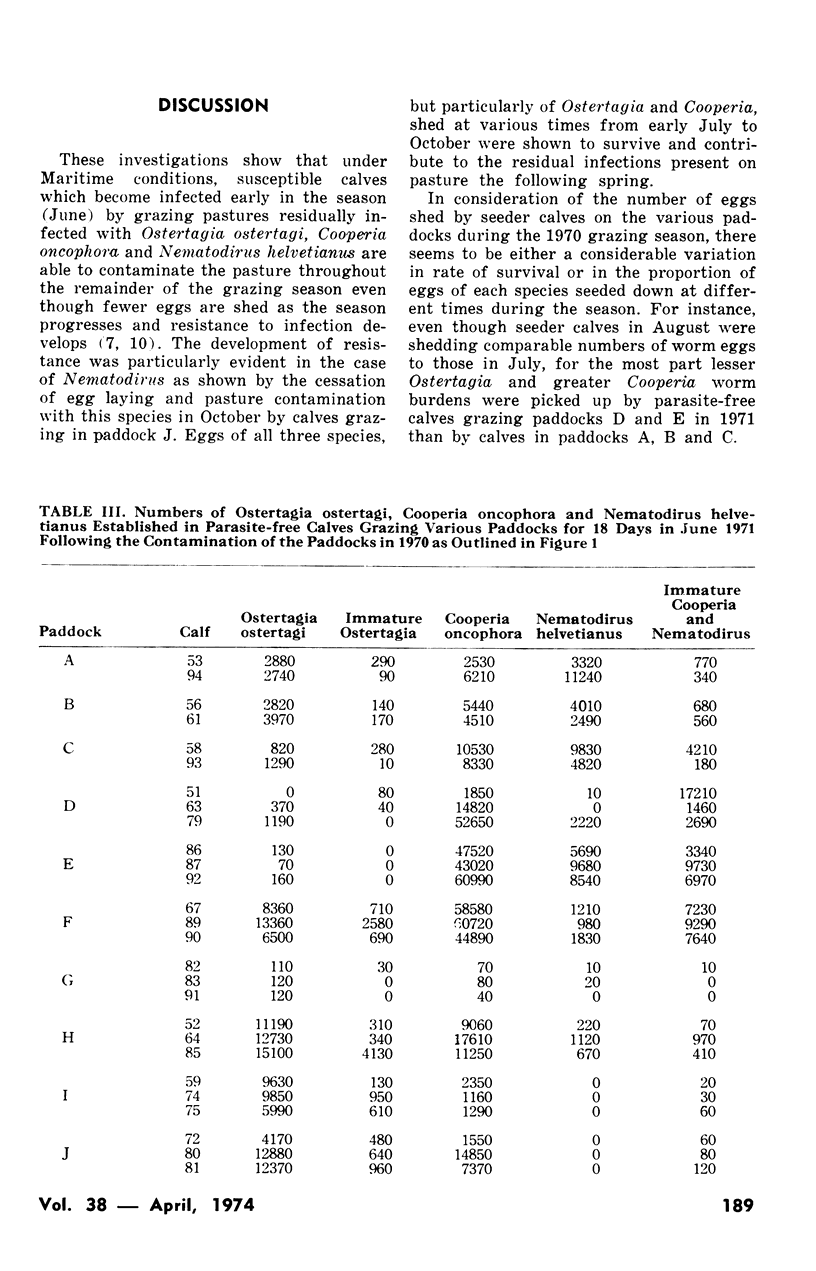
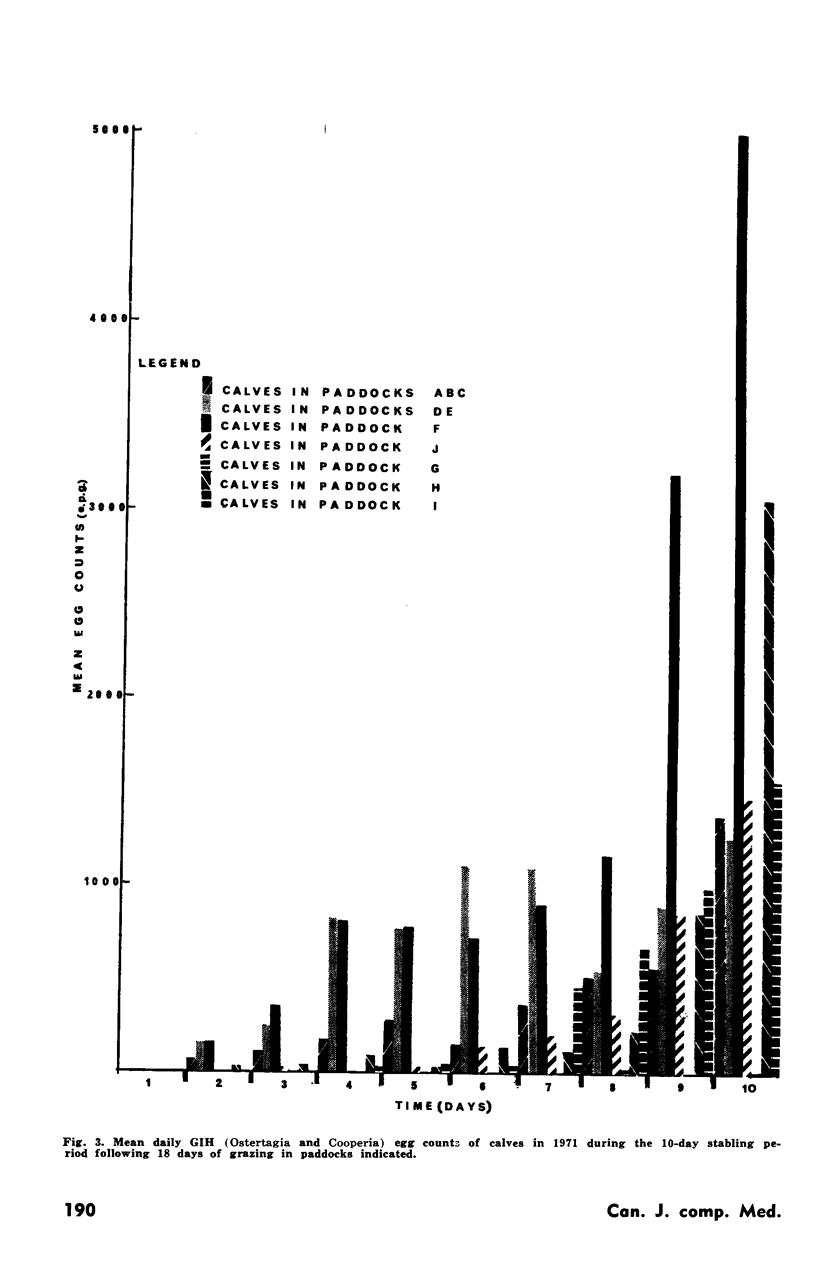
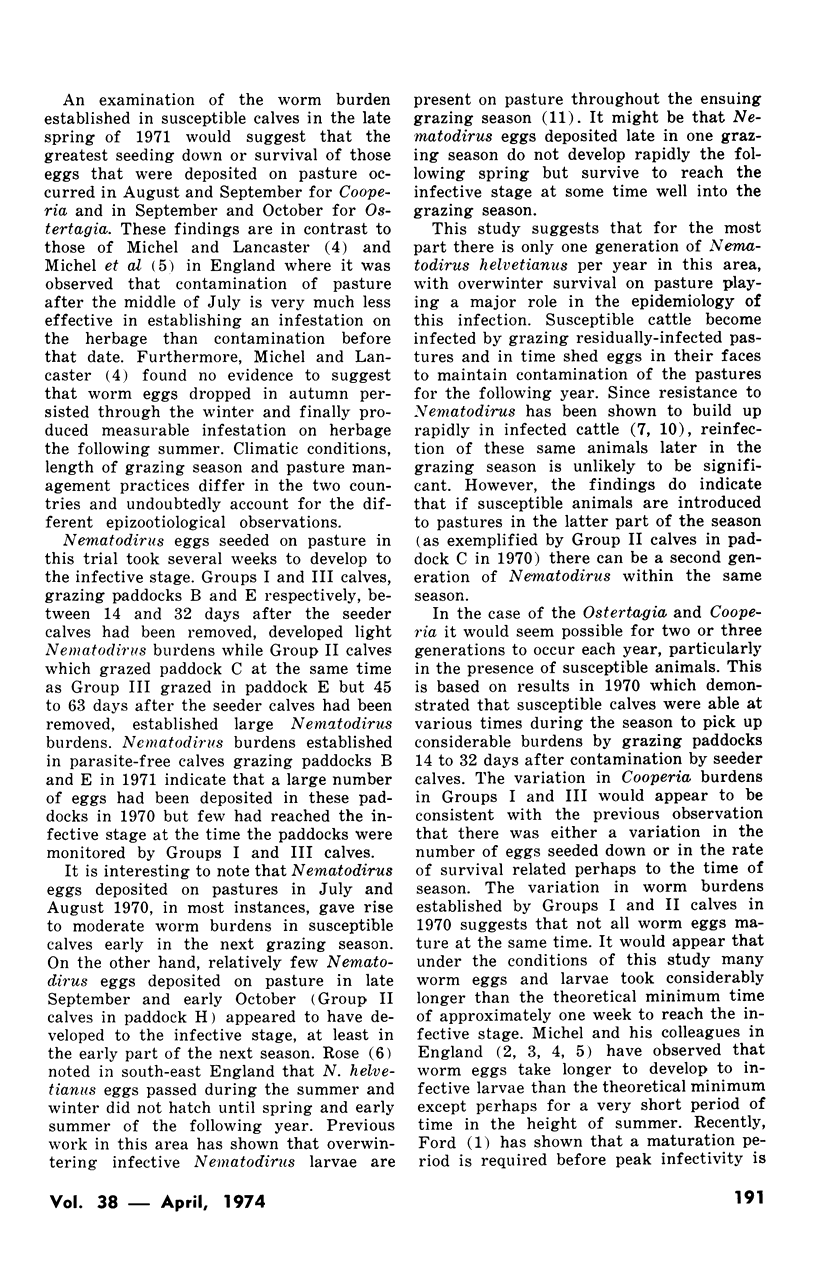
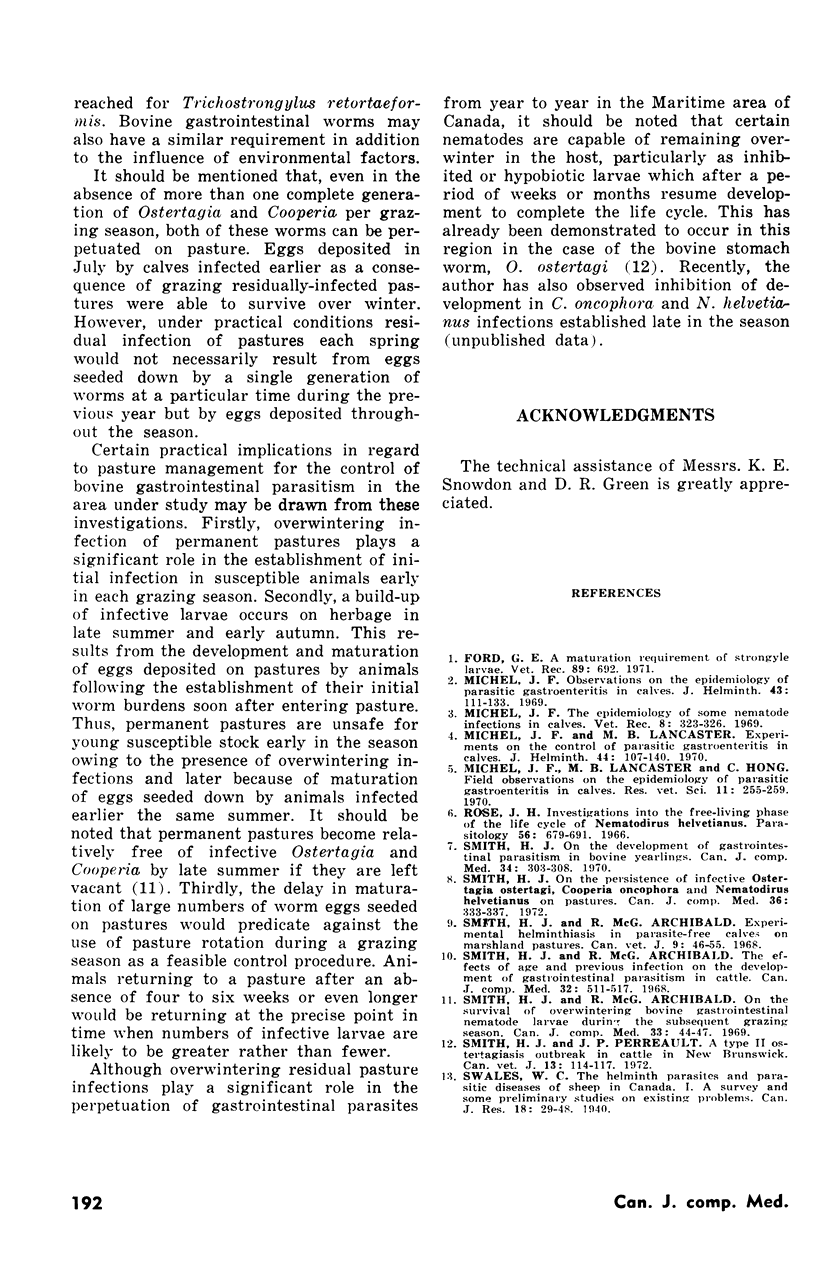
Selected References
These references are in PubMed. This may not be the complete list of references from this article.
- Ford G. E. A maturation requirement for strongyle larvae. Vet Rec. 1971 Dec 25;89(26):692–692. doi: 10.1136/vr.89.26.692. [DOI] [PubMed] [Google Scholar]
- Michel J. F., Lancaster M. B., Hong C. Field observations on the epidemiology of parasitic gastro-enteritis in calves. Res Vet Sci. 1970 May;11(3):255–259. [PubMed] [Google Scholar]
- Michel J. F. Observations on the epidemiology of parasitic gastro-enteritis in calves. J Helminthol. 1969;43(1):111–133. doi: 10.1017/s0022149x00003965. [DOI] [PubMed] [Google Scholar]
- Michel J. F. The epidemiology of some nematode infections in calves. Vet Rec. 1969 Sep 20;85(12):323–326. doi: 10.1136/vr.85.12.323. [DOI] [PubMed] [Google Scholar]
- Rose J. H. Investigations into the free-living phase of the life-cycle of Nematodirus helvetianus. Parasitology. 1966 Nov;56(4):679–691. doi: 10.1017/s0031182000071705. [DOI] [PubMed] [Google Scholar]
- Smith H. J., Archibald R. M. Experimental helminthiasis in parasite-free calves on marshland pastures. Can Vet J. 1968 Feb;9(2):46–55. [PMC free article] [PubMed] [Google Scholar]
- Smith H. J., Archibald R. M. On the survival of overwintering bovine gastrointestinal nematode larvae during the subsequent grazing season. Can J Comp Med. 1969 Jan;33(1):44–47. [PMC free article] [PubMed] [Google Scholar]
- Smith H. J., Archibald R. M. The effects of age and previous infection on the development of gastrointestinal parasitism in cattle. Can J Comp Med. 1968 Oct;32(4):511–517. [PMC free article] [PubMed] [Google Scholar]
- Smith H. J. On the development of gastrointestinal parasitism in bovine yearlings. Can J Comp Med. 1970 Oct;34(4):303–308. [PMC free article] [PubMed] [Google Scholar]
- Smith H. J. On the persistence of infective Ostertagia ostertagi, Cooperia oncophora and Nematodirus helvetianus on pastures. Can J Comp Med. 1972 Oct;36(4):333–338. [PMC free article] [PubMed] [Google Scholar]
- Smith H. J., Perreault J. P. A type II ostertagiasis outbreak in cattle in New Brunswick. Can Vet J. 1972 May;13(5):114–117. [PMC free article] [PubMed] [Google Scholar]


